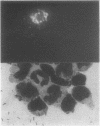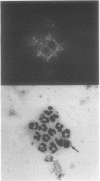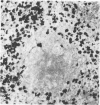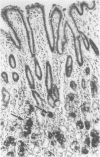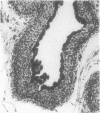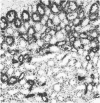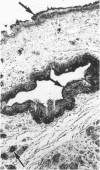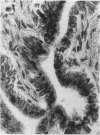Abstract
Monoclonal antibodies were raised against normal human bone marrow cells. One of the antibodies obtained, monoclonal antibody 3C4 (MA 3C4), the subject of this paper, was characterised by immunofluorescence studies with viable normal peripheral blood and bone marrow cells and by immunoperoxidase studies using paraffin sections. In bone marrow and peripheral blood MA 3C4 reacts selectively with cells of late neutrophilic granulopoiesis (myelocytes, metamyelocytes, and neutrophilic granulocytes). Cells of erythropoiesis, thrombopoiesis and lymphopoiesis are negative. In lymph node and spleen only neutrophils react with MA 3C4. In non-haemic tissue reactivity was seen with epithelial cells of a variety of different gland ducts. Thus the antigen detected by MA 3C4 can serve as a marker for neutrophil differentiation in normal haemopoiesis and as a marker for ductal epithelial cells of a variety of organs within non-haemic tissue. The antigen is formalin-resistant and can be detected in paraffin sections. The antibody thus appears to be a valuable reagent for both haematological research and for routine pathology.
Full text
PDF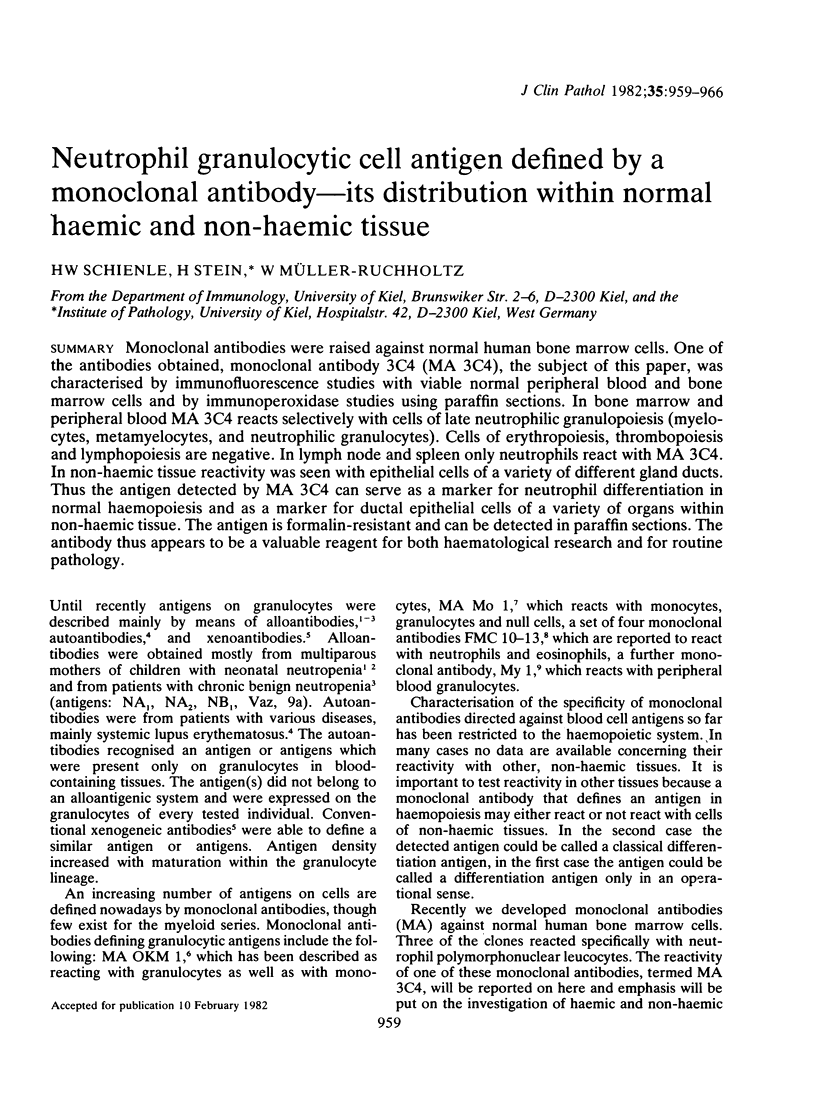
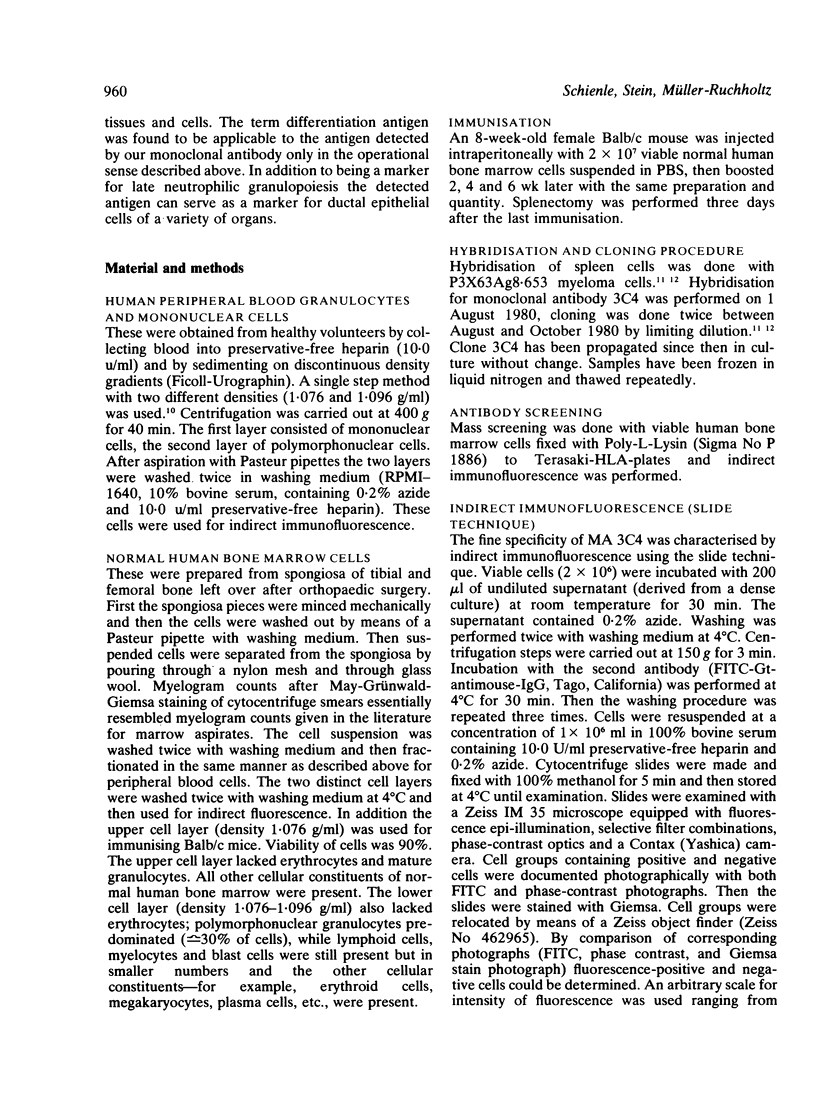
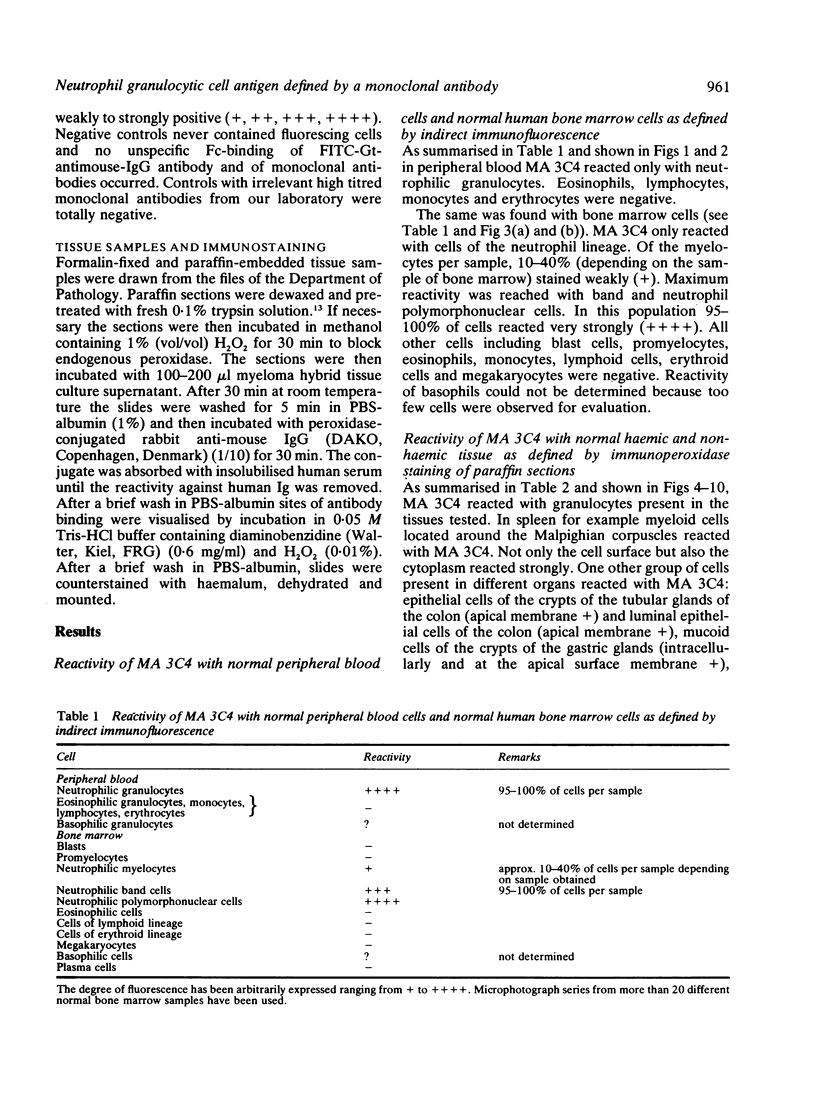
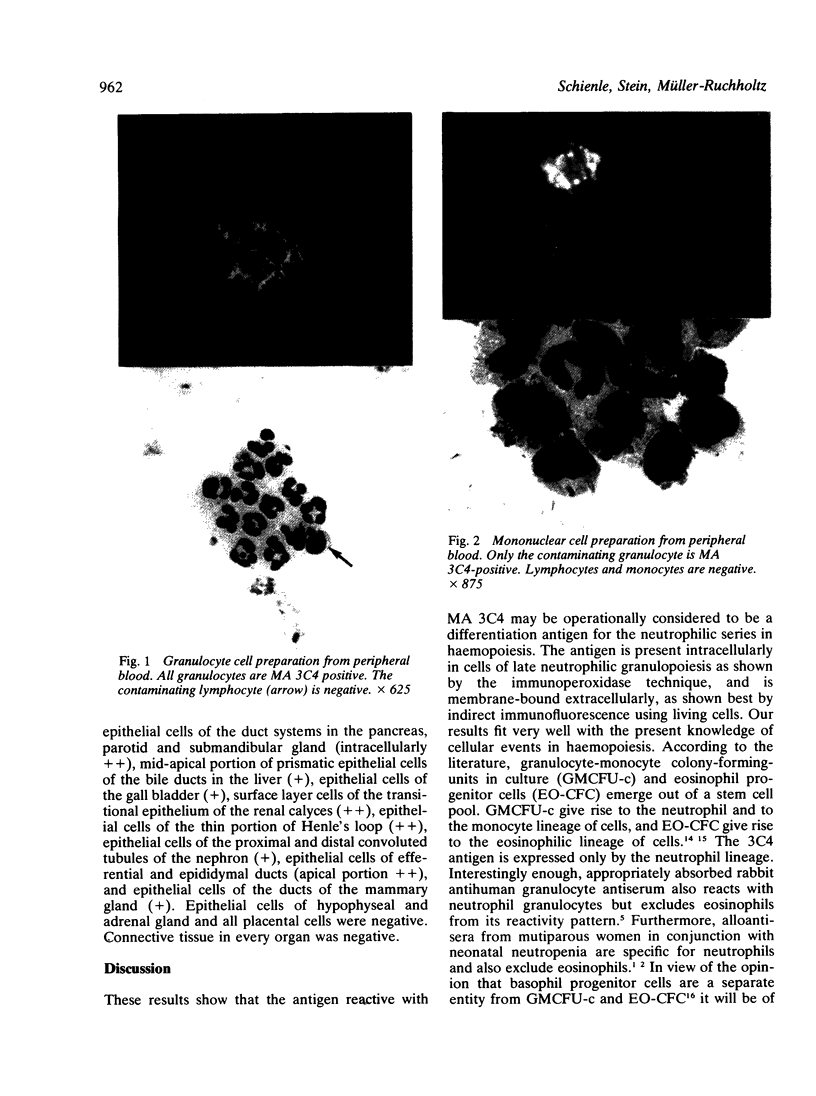
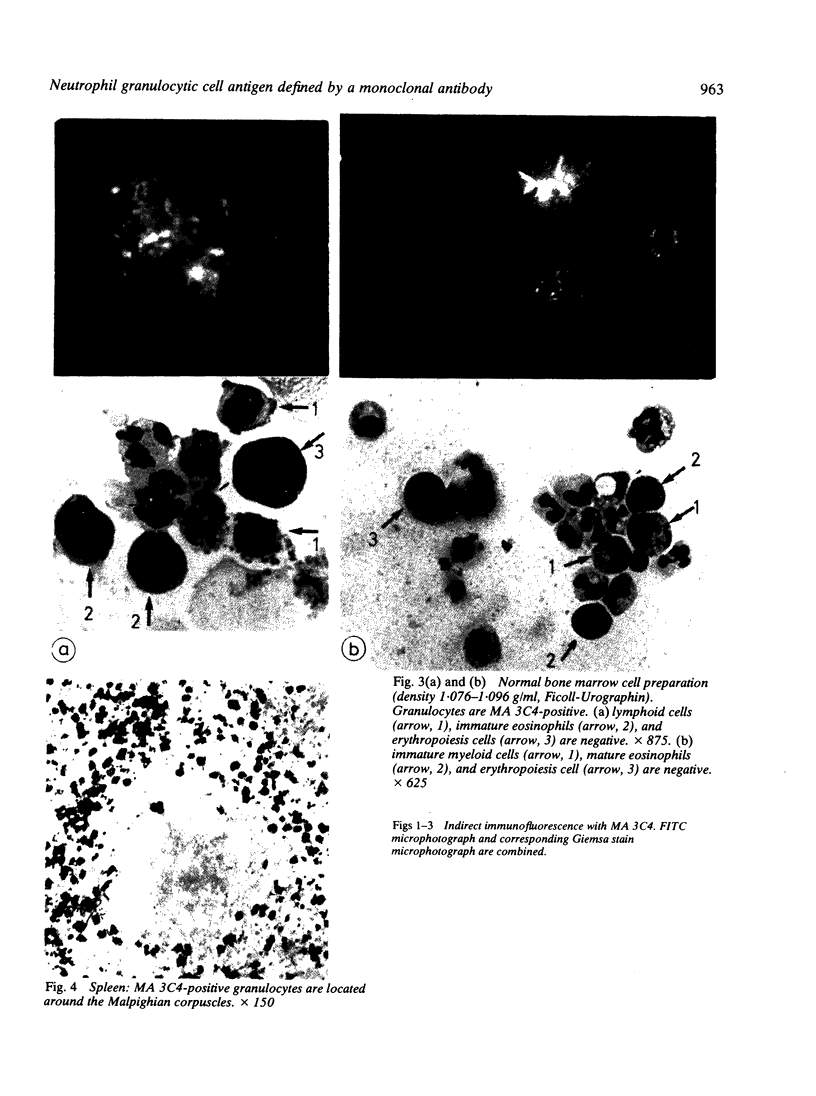
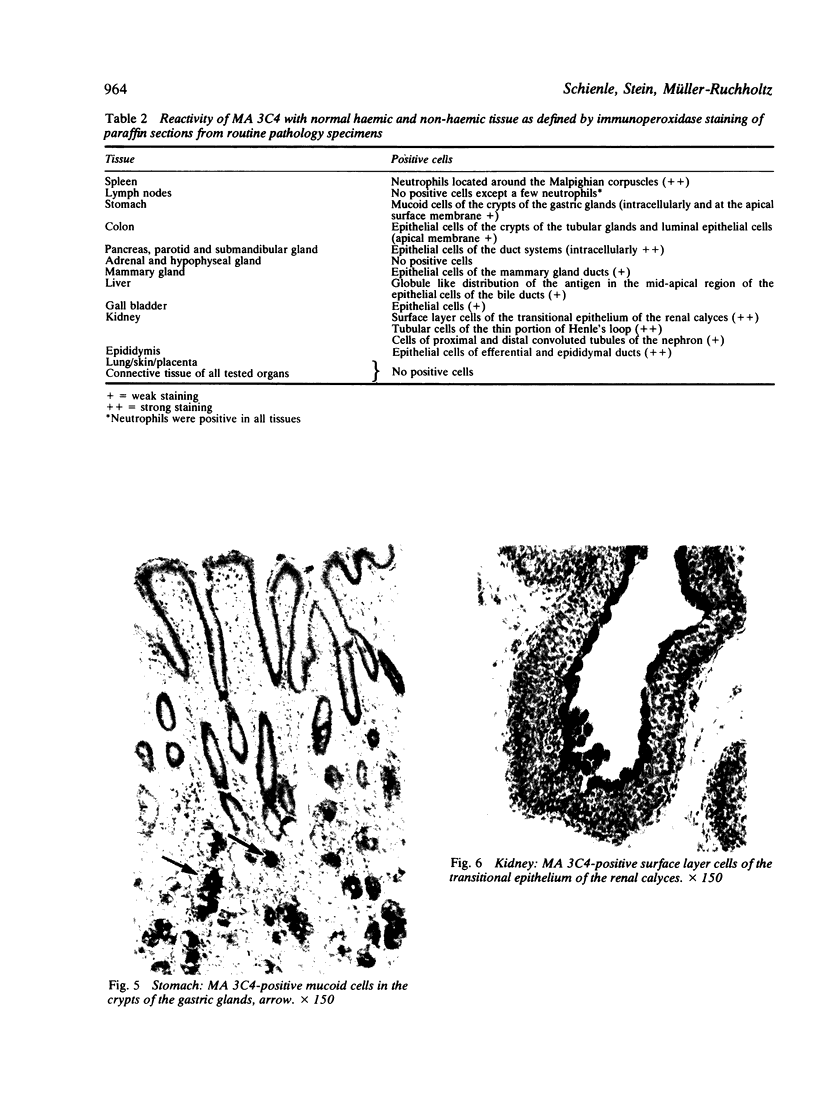
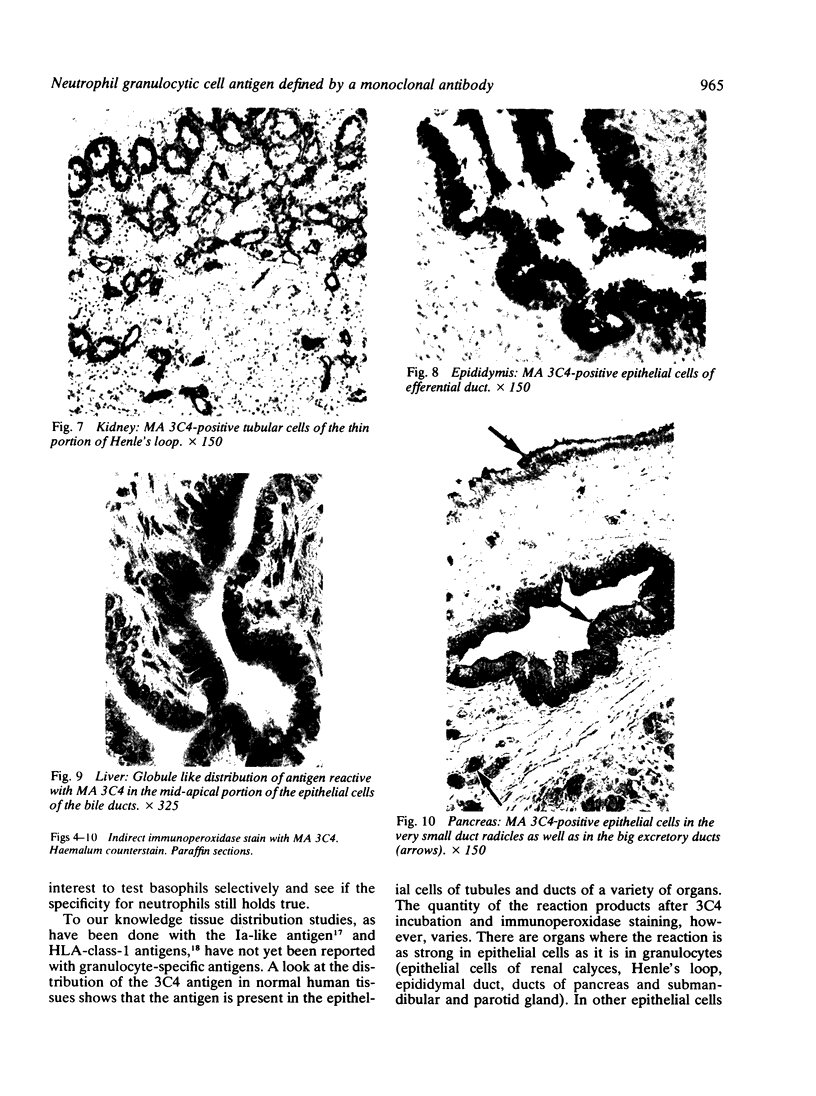
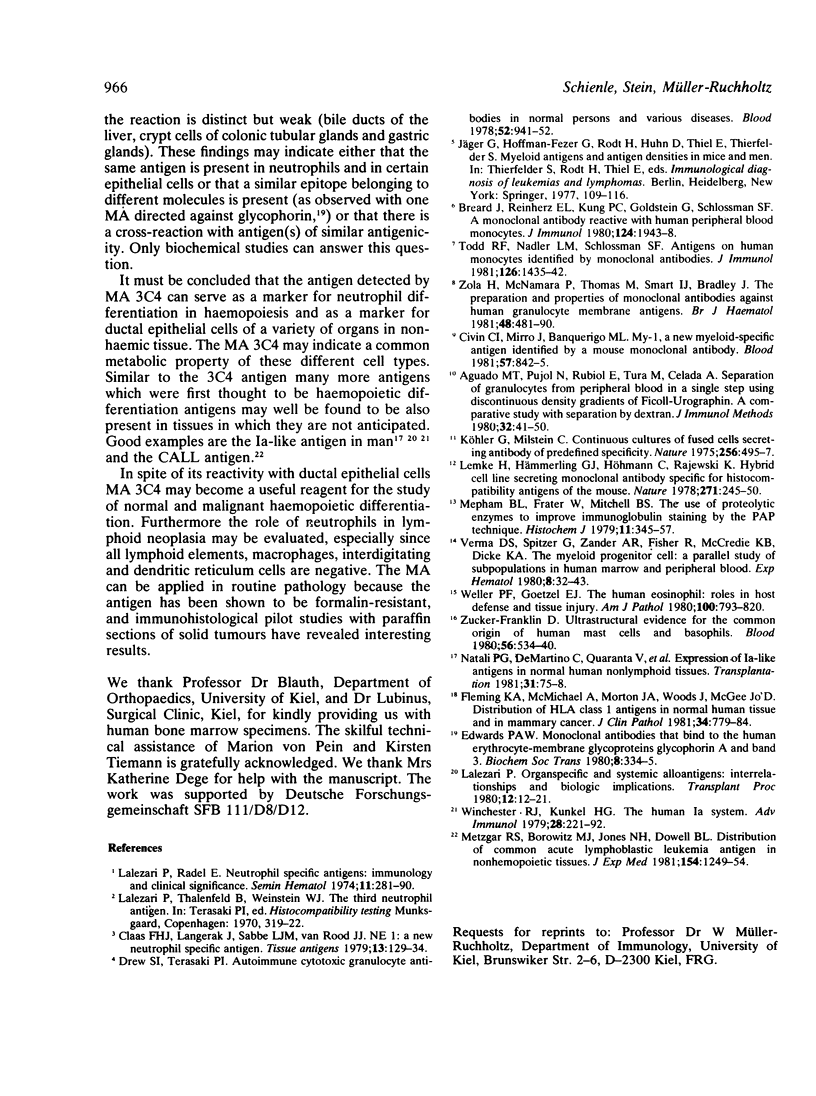
Images in this article
Selected References
These references are in PubMed. This may not be the complete list of references from this article.
- Aguado M. T., Pujol N., Rubiol E., Tura M., Celada A. Separation of granulocytes from peripheral blood in a single step using discontinuous density gradients of Ficoll-Urografin. A comparative study with separation by dextran. J Immunol Methods. 1980;32(1):41–50. doi: 10.1016/0022-1759(80)90115-5. [DOI] [PubMed] [Google Scholar]
- Breard J., Reinherz E. L., Kung P. C., Goldstein G., Schlossman S. F. A monoclonal antibody reactive with human peripheral blood monocytes. J Immunol. 1980 Apr;124(4):1943–1948. [PubMed] [Google Scholar]
- Civin C. I., Mirro J., Banquerigo M. L. My-1, new myeloid-specific antigen identified by a mouse monoclonal antibody. Blood. 1981 May;57(5):842–845. [PubMed] [Google Scholar]
- Claas F. H., Langerak J., Sabbe L. J., van Rood J. J. NE1: a new neutrophil specific antigen. Tissue Antigens. 1979 Feb;13(2):129–134. doi: 10.1111/j.1399-0039.1979.tb01148.x. [DOI] [PubMed] [Google Scholar]
- Drew S. I., Terasaki P. I. Autoimmune cytotoxic granulocyte antibodies in normal persons and various diseases. Blood. 1978 Nov;52(5):941–952. [PubMed] [Google Scholar]
- Fleming K. A., McMichael A., Morton J. A., Woods J., McGee J. O. Distribution of HLA class 1 antigens in normal human tissue and in mammary cancer. J Clin Pathol. 1981 Jul;34(7):779–784. doi: 10.1136/jcp.34.7.779. [DOI] [PMC free article] [PubMed] [Google Scholar]
- Jäger G., Hoffmann-Fezer G., Rodt H., Huhn D., Thiel E., Thierfelder S. Myeloid antigens and antigen densities in mice and men. Haematol Blood Transfus. 1977;20:109–116. doi: 10.1007/978-3-642-66639-1_11. [DOI] [PubMed] [Google Scholar]
- Köhler G., Milstein C. Continuous cultures of fused cells secreting antibody of predefined specificity. Nature. 1975 Aug 7;256(5517):495–497. doi: 10.1038/256495a0. [DOI] [PubMed] [Google Scholar]
- Lalezari P. Organ-specific and systemic alloantigens: Interrelationships and biologic implications. Transplant Proc. 1980 Sep;12(3 Suppl 1):12–21. [PubMed] [Google Scholar]
- Lalezari P., Radel E. Neutrophil-specific antigens: immunology and clinical significance. Semin Hematol. 1974 Jul;11(3):281–290. [PubMed] [Google Scholar]
- Mepham B. L., Frater W., Mitchell B. S. The use of proteolytic enzymes to improve immunoglobulin staining by the PAP technique. Histochem J. 1979 May;11(3):345–357. doi: 10.1007/BF01005033. [DOI] [PubMed] [Google Scholar]
- Metzgar R. S., Borowitz M. J., Jones N. H., Dowell B. L. Distribution of common acute lymphoblastic leukemia antigen in nonhematopoietic tissues. J Exp Med. 1981 Oct 1;154(4):1249–1254. doi: 10.1084/jem.154.4.1249. [DOI] [PMC free article] [PubMed] [Google Scholar]
- Natali P. G., De Martino C., Quaranta V., Nicotra M. R., Frezza F., Pellegrino M. A., Ferrone S. Expression of Ia-like antigens in normal human nonlymphoid tissues. Transplantation. 1981 Jan;31(1):75–78. doi: 10.1097/00007890-198101000-00017. [DOI] [PubMed] [Google Scholar]
- Todd R. F., 3rd, Nadler L. M., Schlossman S. F. Antigens on human monocytes identified by monoclonal antibodies. J Immunol. 1981 Apr;126(4):1435–1442. [PubMed] [Google Scholar]
- Verma D. S., Spitzer G., Zander A. R., Fisher R., McCredie K. B., Dicke K. A. The myeloid progenitor cell: a parallel study of subpopulations in human marrow and peripheral blood. Exp Hematol. 1980 Jan;8(1):32–43. [PubMed] [Google Scholar]
- Weller P. F., Goetzl E. J. The human eosinophil: roles in host defense and tissue injury. Am J Pathol. 1980 Sep;100(3):791–820. [PMC free article] [PubMed] [Google Scholar]
- Winchester R. J., Kunkel H. G. The human Ia system. Adv Immunol. 1979;28:221–292. [PubMed] [Google Scholar]
- Zola H., McNamara P., Thomas M., Smart I. J., Bradley J. The preparation and properties of monoclonal antibodies against human granulocyte membrane antigens. Br J Haematol. 1981 Jul;48(3):481–490. doi: 10.1111/j.1365-2141.1981.tb02740.x. [DOI] [PubMed] [Google Scholar]
- Zucker-Franklin D. Ultrastructural evidence for the common origin of human mast cells and basophils. Blood. 1980 Sep;56(3):534–540. [PubMed] [Google Scholar]



